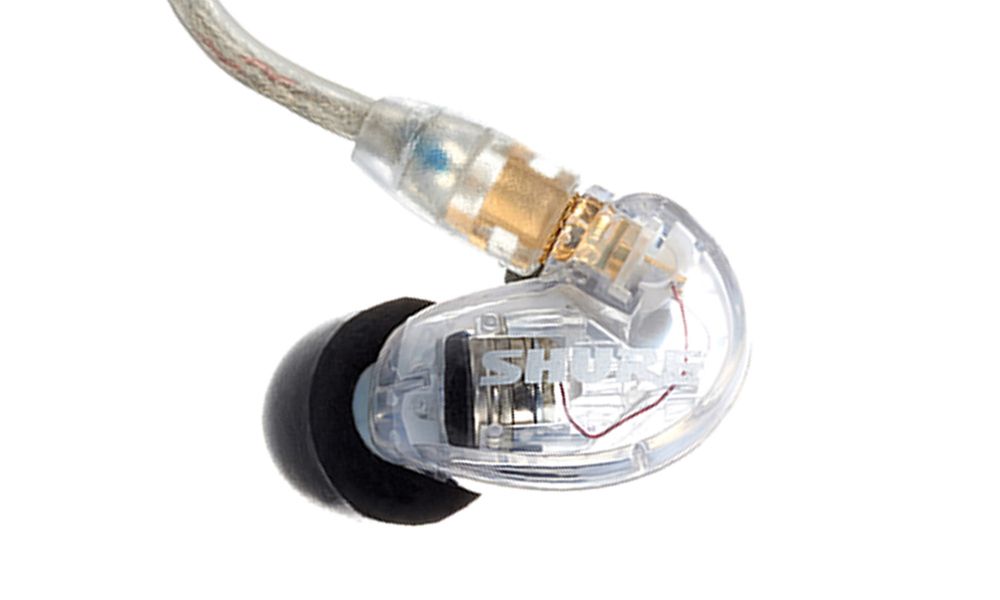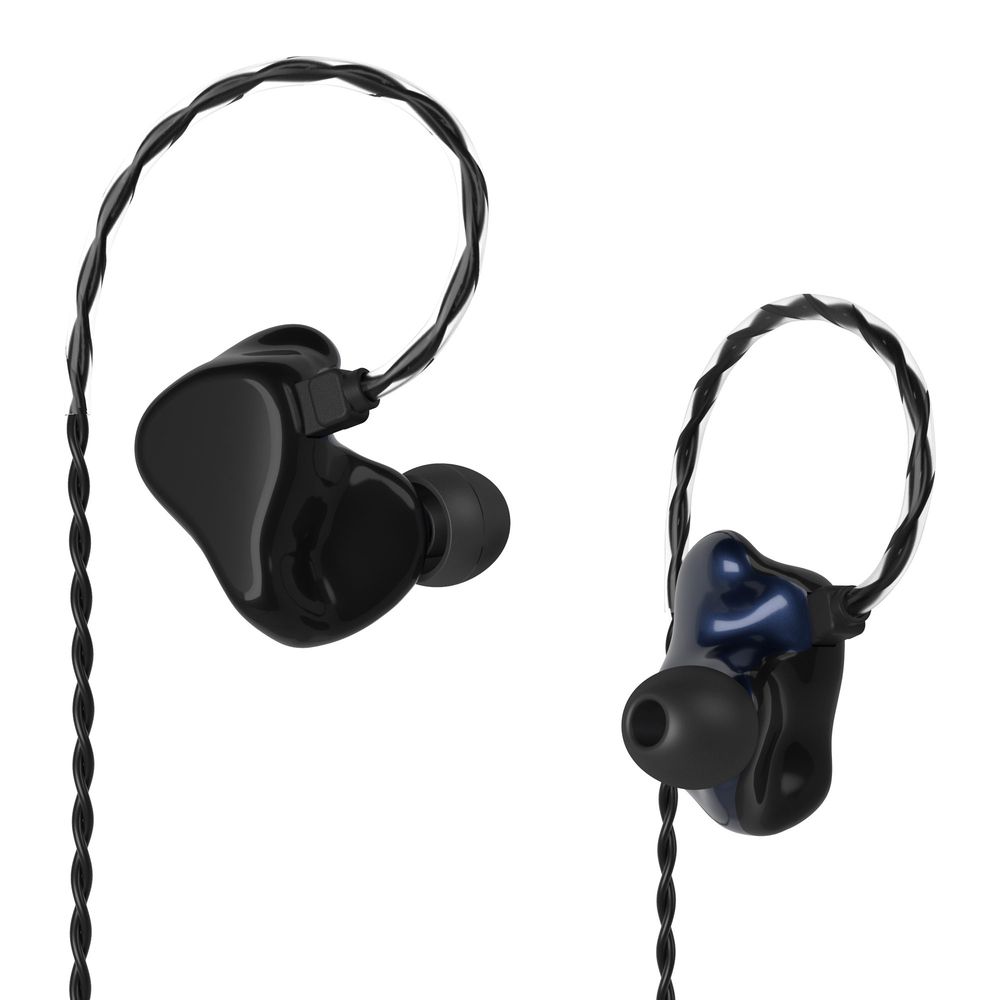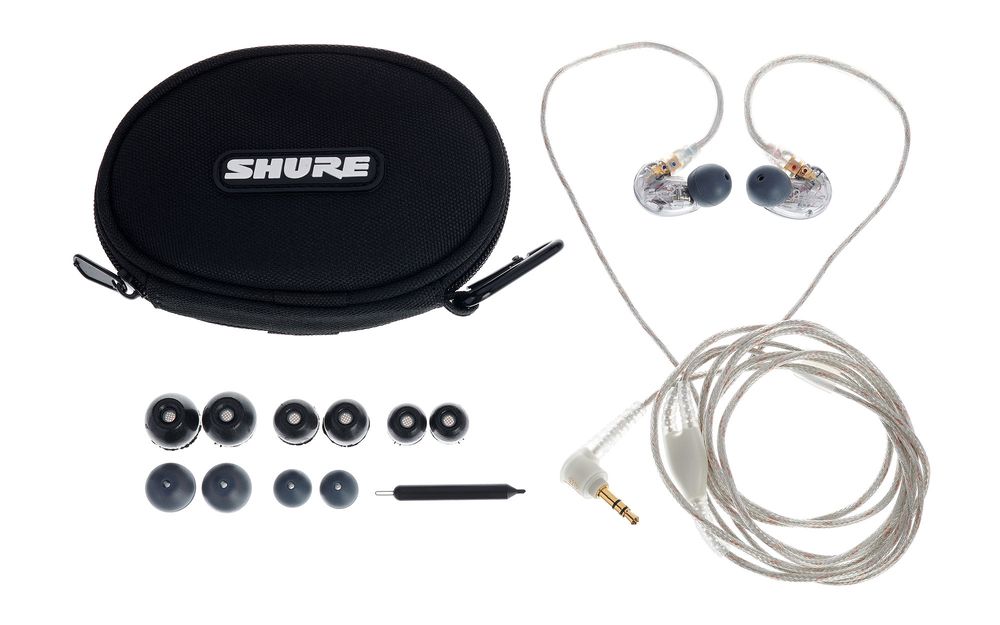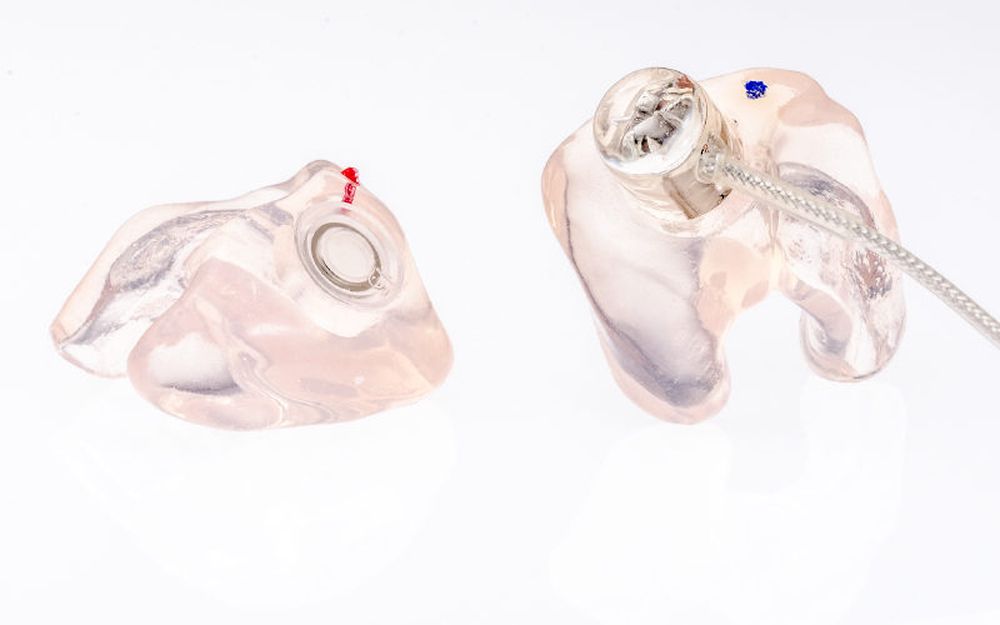8. In-Ear Monitors
The heart of any In-Ear Monitor (IEM) system is undoubtedly the earpiece. When compared to regular earbuds used for personal listening, professional In-Ear Monitors focus on different features. In the rugged world of stages, these headphones need to fit incredibly well and be super durable. Having a detachable and replaceable cable should be a given. Plus, the sound isn't supposed to be altered in any way. Audiophile earphones may offer a pleasing sound for casual music enjoyment, while stage In-Ears are designed to be more balanced and assertive. Furthermore, professional In-Ear headphones generally have a higher maximum sound pressure level and often come with a corresponding warning label.
Single- and Multi-Driver Systems
Headphones are essentially small speakers. There are variations with either a single or multiple drivers in both cases. In single-driver systems, there's only one speaker or driver responsible for reproducing the entire frequency spectrum. In multi-driver systems, the signal gets divided through one or more crossovers and sent to individual drivers, each handling a specific frequency range.

Single-driver In-Ear earpiece
Single-driver systems typically cost less due to their simplicity, but they might not sound as balanced. In multi-driver systems, the signal is divided by one or more crossovers and directed to individual drivers, each responsible for specific frequency ranges. Usually, these are tonally more balanced but can also cost more. As is often the case in life, there are exceptions that challenge this rule.
Drivers
In-Ear Monitors can differ not only in the number of drivers but also in the type and quantity of the installed drivers. Many mid-range models may have "only" two drivers – one for bass and one for high frequencies – but multiple drivers per channel. To compare this to a speaker setup: a two-way In-Ear Monitor with two bass drivers and one high-frequency driver would be akin to a two-way speaker with two woofers. Such headphones (and speakers) generally deliver more pressure and level in the bass. Based on technical specifications, one can roughly estimate whether an In-Ear Monitor is more bass-oriented or has a linear tuning. The more drivers per channel, the more prominent the frequency range.

For drummers, bassists, or DJs, a bass-heavy two-way In-Ear Monitor with three drivers might be preferable.
Moreover, In-Ear Monitors feature different types of drivers. There are dynamic and Balanced Armature (BA) drivers. Dynamic drivers are sturdier and cheaper to manufacture, hence often found in entry-level models. While they may not resolve as finely as Balanced Armature drivers, they usually offer better bass reproduction. Consequently, dynamic drivers are frequently used as bass drivers even in more expensive headphones.
Balanced Armature drivers, being smaller and lighter, generally offer better high-frequency resolution than dynamic drivers. As they are costlier to produce, they are a rarity in budget-friendly models but prevalent in professional-grade ones.
In summary, there's no absolute right or wrong choice. Each application and personal taste differ, making blanket recommendations challenging. Dynamic drivers lean towards a warmer sound, while Balanced Armature drivers offer better resolution and detail. Some manufacturers offer hybrid models, incorporating both dynamic and Balanced Armature drivers, often using dynamics for bass and Balanced Armature for mids and highs.
Form Factor
Apart from sound, the form factor and resulting fit inside the ear are the most crucial aspects of an In-Ear Monitor.
Most available headphones are universal, meaning they fit more or less into any ear. The use of various ear tips ensures a secure fit within the ear canal. The driver housing should ideally fill the entire ear shell.

Universal In-Ear Monitor with Matching Ear Tips
The major advantage is the relatively affordable cost. However, only when a headphone fits perfectly, does it sound as intended. While most universal headphones have decent fits in many ears, some manufacturers have developed intricately designed housings, ensuring near-perfect fits in most cases.

Universal In-Ear Monitor with Elaborate Housing (Lizenz: CC BY-SA 3.0 https://www.amazona.de)
The absolute perfect fit is achievable only with custom-made headphones. These typically cost more than universal models. They require an ear impression taken by an audiologist, with the manufacturer then shaping the earpiece accordingly. Since the earpiece fits precisely into the ear, there's no need for ear tips. Custom solutions are predominantly used in the professional domain.

Musician with customized In-Ear Monitors (Lizenz: CC BY-SA 3.0 https://pro.ultimateears.com)
A middle ground is found in headphones that attach to existing ear molds. The advantage is that the ear mold is custom-made, offering an optimal fit. However, the downside is that the headphones protrude from the ear shell, which can be bothersome during live performances and doesn't look as inconspicuous.

Specialized headphones for customized ear molds - Lizenz: CC BY-SA 3.0 (https://www.hearsafe.de/)
As In-Ear Monitors fit optimally, external noise reduction is substantial. External sounds are nearly eliminated. For those who don't wish to be entirely isolated from the audience and fellow band members, custom headphones often have an "ambience" option. This feature allows some external sounds into the ear through a small bore. However, this option is rarely found in universal headphones.
Another way to hear external sounds with In-Ears is through the use of ambient microphones. The audience is picked up by microphones, and the signal is distributed to the musician's monitor mix according to their preferences. This setup provides the perfect balance between monitor mix and external noise.
By the way, it's always advisable to use both earpieces to fully leverage the advantages of In-Ear Monitoring. However, if using only one earpiece, occasionally switching sides can prevent one-sided strain on the ears.
A Few Tips for Newcomers and Transitioning Users
Novices, likely influenced by price, often opt for single-driver headphones with dynamic drivers. Singers and guitarists usually adapt well to their often balanced sound. On the other hand, bassists, drummers, and keyboardists might consider multi-driver headphones for extended frequency responses, particularly in the lower range. The extra cost for the headphone might often balance out with a wired system.
For those valuing balanced and finely resolving sound, exploring multi-driver headphones, especially those with Balanced Armature drivers, is recommended. Musicians seeking more bass might look for headphones with multiple drivers dedicated to the low-end range.
For most ears, a simple, universal headphone will suffice. However, for particularly small, large, or uniquely shaped ears, more intricate universal headphones or customized solutions may be necessary.
The array of In-Ear Monitors available is overwhelming. However, budget, requirements, and personal preference will ultimately shape the decision.
At our store in Treppendorf, you have the opportunity to test the most popular In-Ear Monitors. Additionally, our PA department team is available for expert advice.








